Choosing the right material for 3D printing
1. Nylon 6
Advantages
Shock absorbent
Nylon has the ability to absorb high shock and stress vibrations. Apart from that, it has high impact strength than other materials. High melting point
Heat resistance and high melting point make an excellent substitute for metals in high-temperature environments.
Fatigue resistant
The products made from Nylon can retain the original mechanical strength after repeated inflections. Thus, making Nylon Fatigue resistant.
Disadvantages
Poor water absorption Exposure to high humidity can lead to inconsistency in dimensional accuracy and part strength. Warping Warping occurs when there is uneven cooling of print. This may result in curls behind the print plate and distort the printed part.
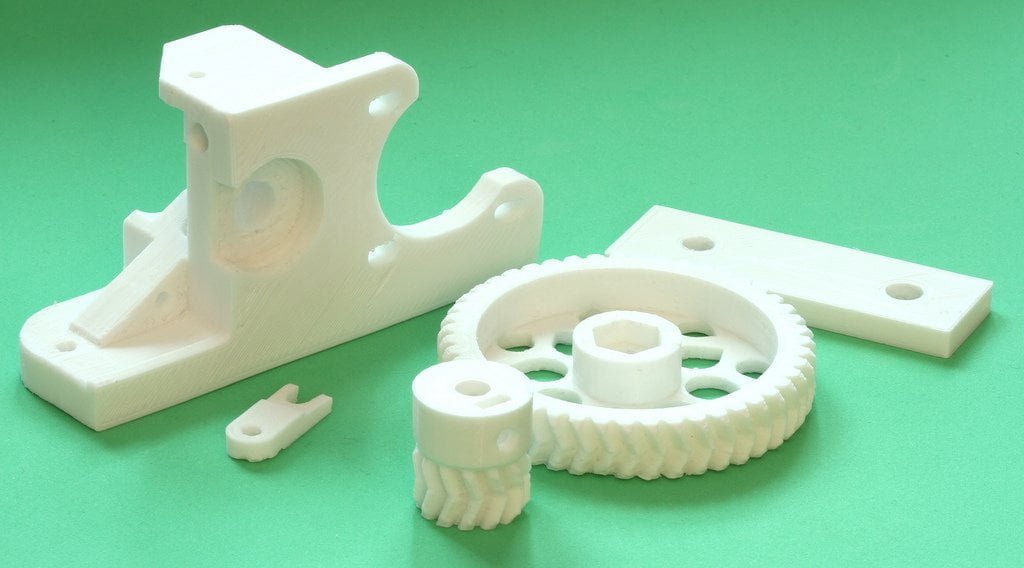
Gears and rollers
Radiator grills and door
handles
Fishing lines
Food packaging
Skateboard wheels
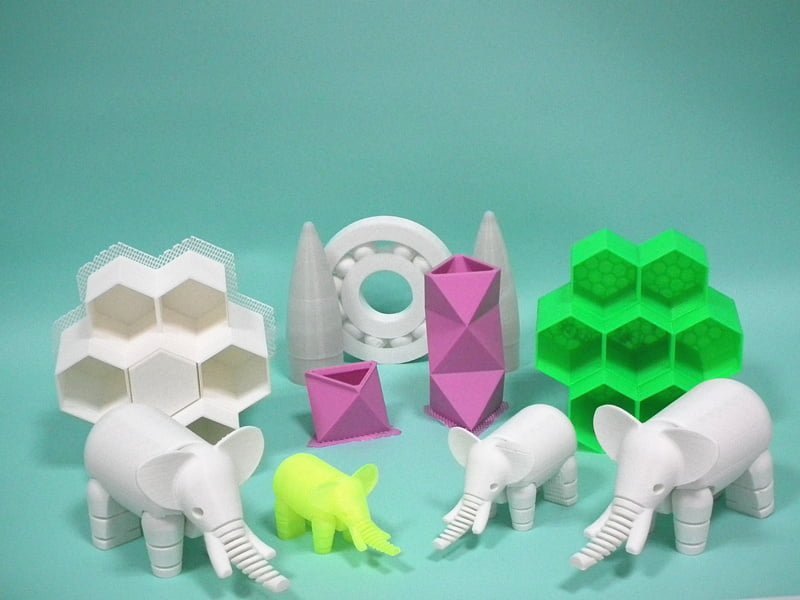
Decorations
Pots
Bottles
Plastic films
2. PLA (Polylactic Acid)
PLA is often considered the popular 3D printing material across the industry. Ease of use and minimal warping issues has made PLA the best material for a beginner. Unlike other materials made from Petroleum, thermoplastic polymer PLA is derived from corn starch or sugarcane. The mechanical properties of PLA are most suitable for 3D printing. It is a semi-crystalline polymer with a melting temperature of 180° Celsius which is less than ABS. PLA is not suitable for functional prototypes because of its brittleness.
Advantages
Easy post-processing
PLA is a popular material and its parts are easily sanded, polished, and painted allowing for an improved finish surface. Parts made from PLA can be easily drilled, mill, and glued.
Variety of color options
As PLA is easily pigmented diverse range of colors and blends are available. It can be easily mixed with other materials like wood, carbon, and metal.
Biodegradable
PLA is an eco-friendly material as it is biodegradable. It requires a low melting temperature resulting in less energy use. PLA emits fewer toxic gases as compared to other plastics.
Disadvantages:
Low heat resistance
Due to low heat resistance, PLA cannot be used for high temperature applications. It can rapidly deform under stress.
Brittle
PLA is quite brittle which means it cannot be suited for mechanical purposes. It is weaker and has low tensile strength than other materials which makes it suitable for aesthetic purposes.
High permeability
As PLA is high permeable, moisture and oxygen go through it easily than other plastics. Hence, PLA is not suitable for food storage
3. ABS (Acrylonitrile Butadiene Styrene)
Advantages
Post-processing
Little post processing is required with ABS. Hence, it saves time in the production of complex parts.
Strong mechanical properties
ABS has great properties like durability, toughness, and ductility. These properties make a great material for functional applications. High Temperature
ABS can withstand higher temperature of 100°C which is more than PLA and PETG.
Disadvantages
Prototype shrinkage
ABS shrinks when it comes in contact with air, causing the part to shrink. A heating plate is necessary to avoid the warping of the prototype. Moisture absorbent
ABS tends to absorb moisture from the air which can lead to a poor quality print. distort the printed part.

3D printed toys
Tool handles
Plug holders
Keyboard keys
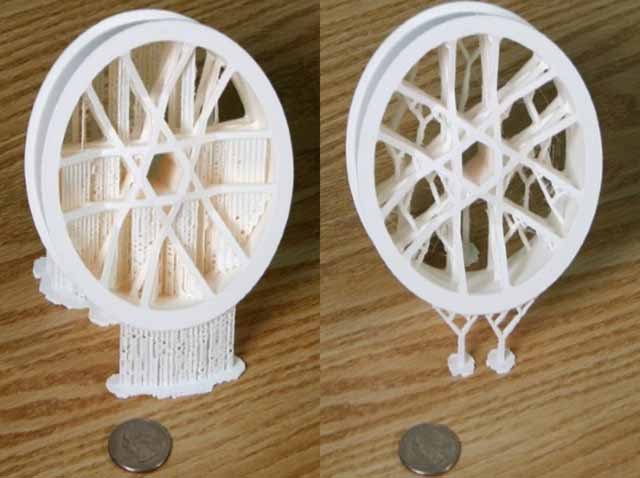
Pharmaceutics
Paper adhesive
Paper coating
Model release for casting
4. PVA (PolyVinyl Alcohol)
Advantages
Easy post processing
PVA can create incredible parts that take little to no effort to clean up. It is soluble in water making way for easy clean up of complex models.
Save time and money
PVA does not require additional solvent nor does it need any additional hardware.
Disadvantages
Expensive
A high in demand material as many designs cannot be printed without PVA.
Low melting point
PVA has a low melting point of 190°C. Therefore, it can’t be used for printing objects that require high temperatures.
5. TPU (Thermoplastic Polyurethane)
Advantages
Rubbery quality
TPU has a very soft and rubbery light quality that is great for producing and prototyping flexible and shock-resistant parts.
Elongation
Due to strong mechanical properties, TPU has a 500 percent elongation break which is more than any other material.
Disadvantages
Flexibility TPU is more difficult to print compared to other materials due to its flexibility.
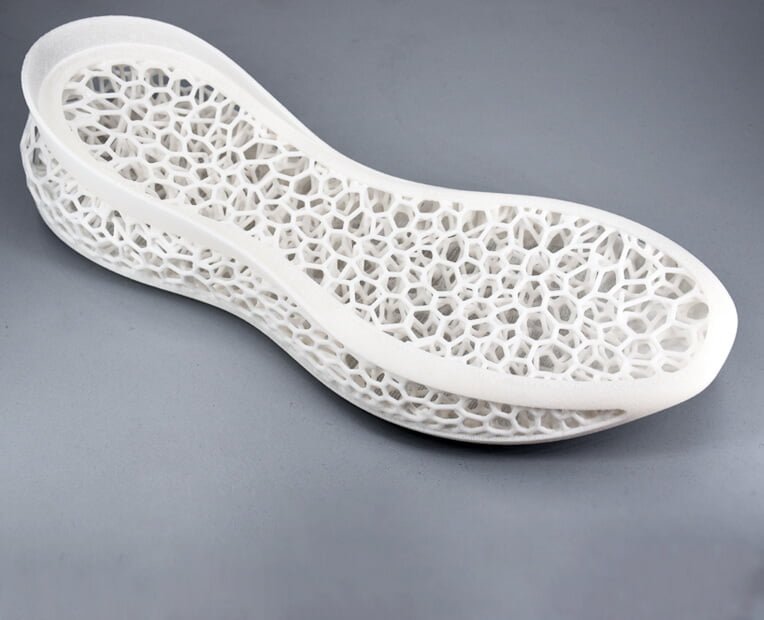
Sporting equipment
Planes
Trains
Footwear
Automotive
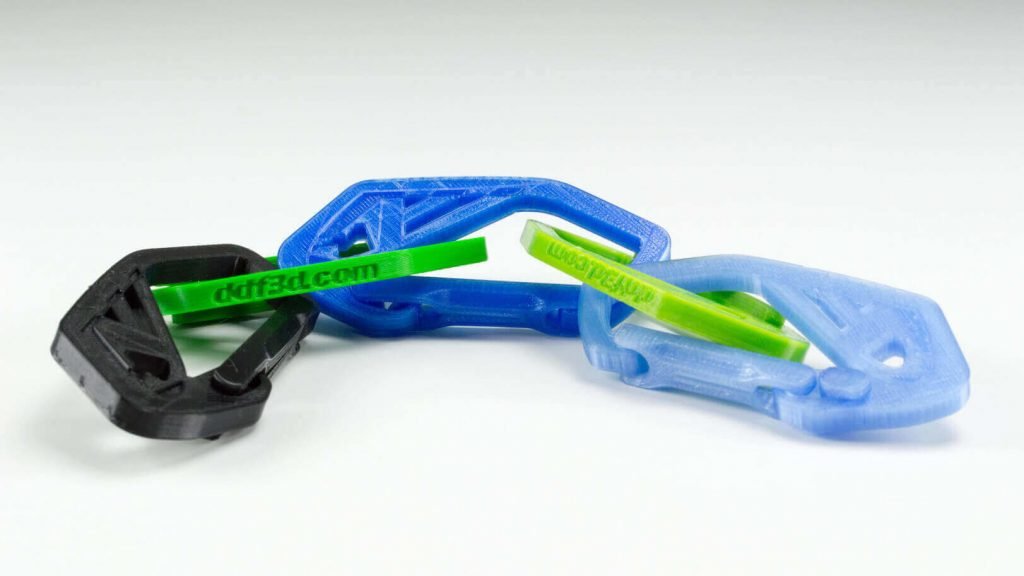
Food container
Pharmaceutical purpose
Machine Guards
Insulator in Electrical
applications
Cosmetic Packaging
6. PETG (Polyethylene terephthalate glycol)
Polyethylene terephthalate glycol commonly known as PETG is mostly odorless, amorphous thermoplastic. A widely used polymer accounting for 18% of the global market. It is more durable, stronger, impact resistant, and ductile in nature. Overheating issues are reduced as PETG is a combination of PET and glycol properties. It is 100% recyclable which makes it environment friendly.
AdvantagesFood grade material
PETG is safe material for use as food container. It does not cause any adverse health effects.
Easy Coloring
PETG is easily colorable to achieve the desired appearance. It improves the application overall as it is naturally transparent.
Odorless
PETG is almost odorless making it comfortable to process at the work location.
Glossy finish
Glycol is added to PETG which makes the material transparent and results in a smooth and glossy finish.
Less warping
As compared to other materials warping of PETG is significantly low.
Disadvantages
Stringing problem
As PETG needs a high melting temperature, it prints string while traveling between points that can be difficult to remove.
Cannot be smoothed with acetone
Acetone has no effect on PETG. It cannot harm PETG so dichloromethane is used which is dangerous and it is not easily available. temperatures.
7. Carbon Fiber
Advantages
Strength reinforcement
Carbon Fiber has a very high strength ratio therefore it is used for applications where weight is a major consideration factor.
Resistance against corrosion
Due to its properties, Carbon Fiber is corrosion resistant and chemically stable.
Disadvantages
Damaged nozzle
A standard brass nozzle is damaged when used with Carbon Fiber which will affect the print quality. Therefore, it is advisable to use a hardened Stainless Steel nozzle while using Carbon Fiber.
Tendency to clog
As Carbon Fiber is brittle it is most likely to clog as compared with other materials.
Surface Finish
A combination of Carbon Fiber and thermoplastic material makes a filament. If a high amount of carbon fiber is added it may degrade the quality

Applications
R/C Vehicles
Functional prototypes
Decorative pieces
Lightweight Props
